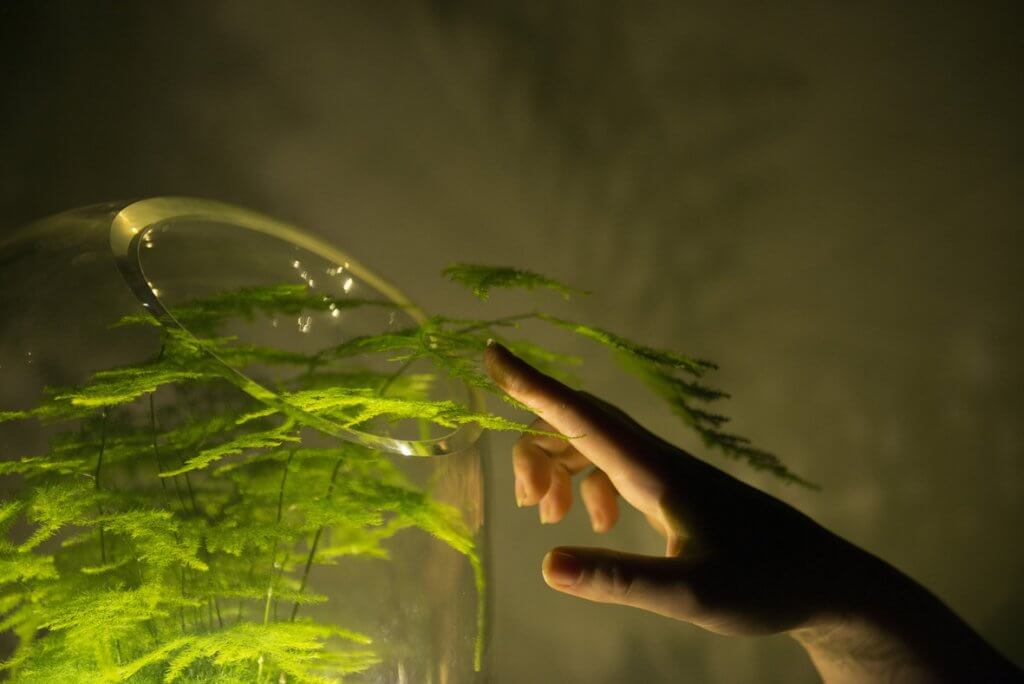Microbial fuel cells transform a houseplant into a lamp
The Living Light by Dutch designer Ermj van Oers is an off-grid lamp that harvests its energy through the photosynthetic process of a houseplant.
“Nature is full of smart solutions, I see my target as a designer to inspire people with the potential power within natural processes,” says Oers.
Solar energy converted to electricity in plant microbial fuel cell
Plants use sunlight to photosynthesize, thus producing organic compounds. A part of these compounds is released into the soil, and naturally-occurring bacteria break down the organic matter and release electrons and protons. The plant microbial fuel cell consists of an anode compartment that captures the electrons, and transfers them via a wire to the cathode. The flow of electrons from anode to cathode is used as electricity.

The Living Light produces up to 0.1mW of energy—enough to function as a desktop reading lamp. The lamp is touch-activated: simply stroke the leaves to turn the light on. And, the healthier the plant, the more energy you’ll receive back.
A small batch of Living Lights will be produced in 2018.
Scaled version to come: Living Park
Ermj van Oers and her team are also planning a Living Park, which would be a scaled version of the Living Light—a city park powered by its plants. The lights will turn on as you walk through the park, making for a striking interactive experience.
“We should keep dreaming and visualise our dreams to inspire others, to come closer to a more sustainable system,” says Oers.

